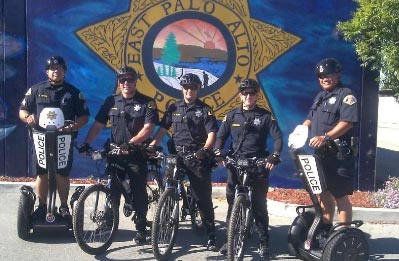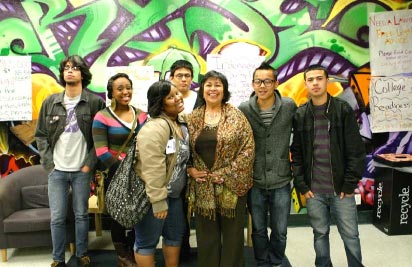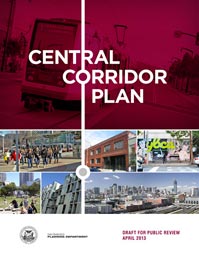Livable Places Update: February 2014
Special Edition! New Partners Conference Partnerships Spark Smart Growth Successes
 Local leaders are uniquely positioned to improve the livability of communities. Closer to the problems, you can test innovative solutions for sparking economic growth, improving quality of life and protecting the environment – which also makes you pioneers for state and national change. That said, many issues cross disciplines and jurisdictional boundaries making partnerships critical to addressing key smart growth issues such as public safety, social equity, access to healthy food and active living opportunities and climate change.
Local leaders are uniquely positioned to improve the livability of communities. Closer to the problems, you can test innovative solutions for sparking economic growth, improving quality of life and protecting the environment – which also makes you pioneers for state and national change. That said, many issues cross disciplines and jurisdictional boundaries making partnerships critical to addressing key smart growth issues such as public safety, social equity, access to healthy food and active living opportunities and climate change.
Police and Public Health Partner Up to Activate Public Spaces: East Palo Alto
 In the small Bay Area city of East Palo Alto, residents don’t get enough physical activity, and their health suffers. Although East Palo Alto’s public spaces – including its streets, sidewalks, and parks – provide the greatest opportunity for daily physical activity, these spaces are highly underused. The reason: fear of crime and violence.
In the small Bay Area city of East Palo Alto, residents don’t get enough physical activity, and their health suffers. Although East Palo Alto’s public spaces – including its streets, sidewalks, and parks – provide the greatest opportunity for daily physical activity, these spaces are highly underused. The reason: fear of crime and violence.
Partnership for Community Health: Richmond, CA
 Richmond provides a good example of how Health in All Policies (HiAP) strategies can be implemented at the local level. The program is based on the understanding that health disparities, especially in communities of color and low-income communities, undermine the health of the entire community. The new approach puts health equity and improving residents’ health at the center of municipal policies.
Richmond provides a good example of how Health in All Policies (HiAP) strategies can be implemented at the local level. The program is based on the understanding that health disparities, especially in communities of color and low-income communities, undermine the health of the entire community. The new approach puts health equity and improving residents’ health at the center of municipal policies.
Partnering to Improve Health by Changing the Food System
 Good food makes for good communities. In urban areas and rural towns around the country, local and regional food systems have become an increasingly important factor for the smart growth movement as communities plan for a healthy future where all residents have convenient access to nutritious and affordable food.
Good food makes for good communities. In urban areas and rural towns around the country, local and regional food systems have become an increasingly important factor for the smart growth movement as communities plan for a healthy future where all residents have convenient access to nutritious and affordable food.
Building Partnerships for Disaster-Resilient Economies
 As extreme weather disasters become increasingly common, their impacts are being felt nationwide by communities large and small. These impacts can be particularly hard on businesses. Without the necessary preparation, businesses can suffer costly damage, be cut off from supplies, lose sales, and experience disrupted operations when disaster strikes. In some cases, they may even be forced to close permanently.
As extreme weather disasters become increasingly common, their impacts are being felt nationwide by communities large and small. These impacts can be particularly hard on businesses. Without the necessary preparation, businesses can suffer costly damage, be cut off from supplies, lose sales, and experience disrupted operations when disaster strikes. In some cases, they may even be forced to close permanently.
Gathering Steam: New Partners for District-Scale Energy Conservation
 Over the last two years, the City of San Francisco has been analyzing the benefits and challenges of adding district heating and cooling to two development projects. The Central Corridor Plan would rezone a former industrial area for high-density, transit-oriented, mixed use using more efficient and resilient infrastructure.
Over the last two years, the City of San Francisco has been analyzing the benefits and challenges of adding district heating and cooling to two development projects. The Central Corridor Plan would rezone a former industrial area for high-density, transit-oriented, mixed use using more efficient and resilient infrastructure.
Local Government Commission Newsletters
Livable Places Update
CURRENTS Newsletter
CivicSpark™ Newsletter
LGC Newsletters
Keep up to date with LGC’s newsletters!
Livable Places Update – April
April’s article: Microtransit: Right-Sizing Transportation to Improve Community Mobility
Currents: Spring 2019
Currents provides readers with current information on energy issues affecting local governments in California.
CivicSpark Newsletter – March
This monthly CivicSpark newsletter features updates on CivicSpark projects and highlights.



